28 Elements in Urban Landscape Part 1
E-ext & learn more
e-Text
ELEMENTS IN URBAN LANDSCAPE
- Types of open spaces
- Concept of landscape and its Components
- Open spaces Landscape buildings define the edge of open spaces landscape occupies open spaces.
URBAN LANDSCAPE TYPES
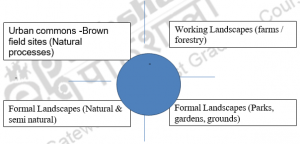
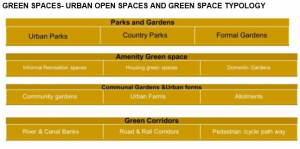
QUALITY LANDSCAPE
The landscape, development block, and movement framework are the three main design elements of an urban project of any scale.
By landscape, we mean many things. It is the open spaces, water, movement corridors and way-leaves; it is parks, squares, and streets; it is the street furniture; it is hard and it is soft.
In design terms, there are distinct task areas, for example: the intrinsic landscape characteristics, for good or ill, of the site and its setting. Open space planning, the typology hierarchy, function and frequency of existing and desirable facilities, creating a landscape structure for the site as a whole; and then the detailed treatment of individual schemes and elements.
DESIGN ELEMENTS
The three main design elements of an urban project of any scale. By landscape, we mean many things; it is the open spaces, water, movement corridors and way-leaves; it is parks, squares, and streets; it is the street furniture; it is hard and it is soft.In design terms, there are distinct task areas, for example: the intrinsic landscape characteristics, for good or ill, of the site and its setting. Open space planning, the typology hierarchy, function and frequency of existing and desirable facilities, creating a landscape structure for the site as a whole; and then the detailed treatment of individual schemes and elements.
GREEN WAY
Greenway A network of spaces encompassing cycle and footpath routes, but also acting as ‘wildlife corridors’ – enabling wildlife to travel through urban areas. Streams or disused railways, for example, with green fingers penetrating from the countryside, through the town/city edge and into the urban core.
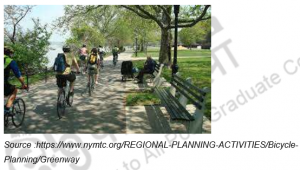
WATER WAY
Includes lakes, ponds, rivers, canals and streams, which provide rich wildlife habitats, offer recreational value and can be used as movement corridors.
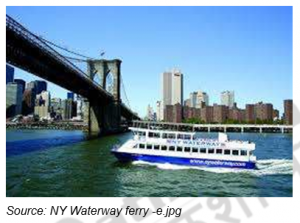
MEADOW
A public space for informal recreation, located on the edge of a neighborhood. Often part of a flood plain comprising natural grasses and wildflowers.
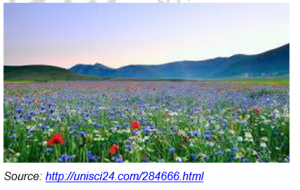
GREEN
An informal grassed public space associated with the focal point of urban life that sometimes incorporates a football or cricket pitch.
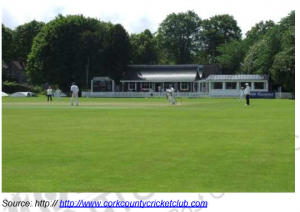
PUBLIC SQUARE
A formal public space, no larger than a block and located at focal points of civic importance fronted by key buildings, usually hard paved and providing passive recreation.
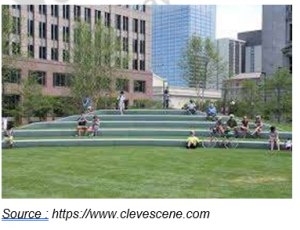
COMMUNAL GARDEN
A semi-private space not accessible to the general public, usually located within the interior of a perimeter block, providing a centrally managed green space for residents.
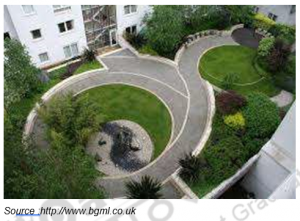
PRIVATE GARDEN
A private space located within the plot of an adjacent building.
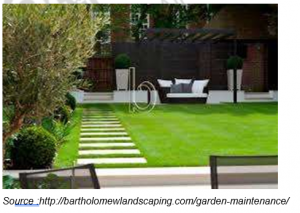
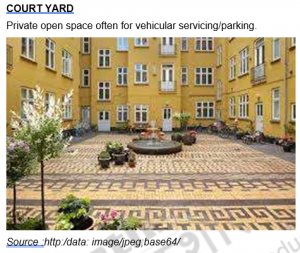

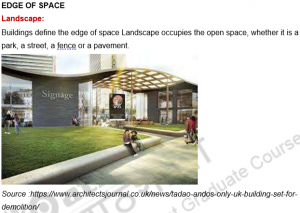
LANDSCAPING
Landscaping focuses on the beatification of the outdoor terrain and to some interior settings. Landscaping combines the principles of art with the science of growing plants.
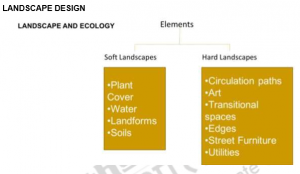
| you can view video on Elements in Urban Landscape Part 1 |
